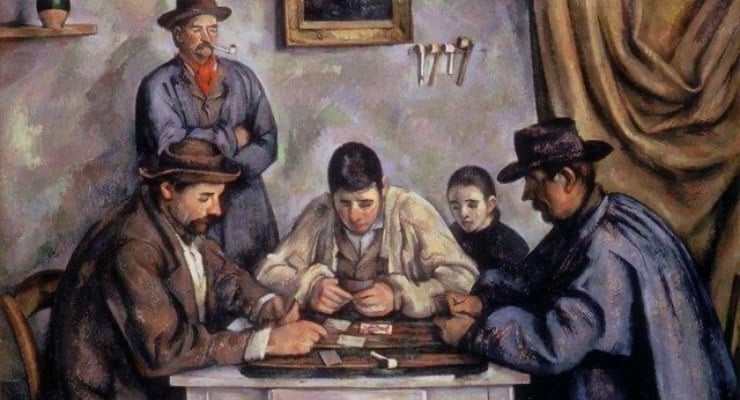What does the 12,000-year-old face found in Şanlıurfa tell us?

A T-shaped column bearing a human face was unearthed for the first time in the Karahantepe excavation site.
This is one of the first regions where humanity settled 12,000 years ago.
According to experts, this face carved on stone during the Neolithic period, when even animal husbandry was still a thing of the past and writing was still unheard of, provides important clues about the people's symbolic world and abstract ways of thinking.
Excavation director Prof. Dr. Necmi Karul, describing the historic excavation day to BBC News Turkish, said, "I was at the excavation site. We believed that the stones we had found here until now represented humans, but that was the first time we encountered a facial depiction. There was great excitement."
Dr. Ceren Kabukçu, an archaeobotanist from the University of Liverpool in England who took part in the excavations, believes the find is an evolved and mastered example of an artistically complex process.
Dr. Kabukçu, noting that there is an incredible world within the Neolithic settlements in Şanlıurfa and its surroundings, explains the importance of the discoveries here as follows:
"As we come across new examples, we see that this world is more complex, more beyond our imagination."
'HUMAN BEGINS TO PUT HIMSELF AT THE CENTER OF THE UNIVERSE'The facial expression in the latest find at Karahantepe is a depiction with sharp features, a small nose, and deep eye sockets.
Prof. Karul says the find "does not directly represent a god or superhuman being."
"They might be symbolically explaining a concept, an idea, through the human body."
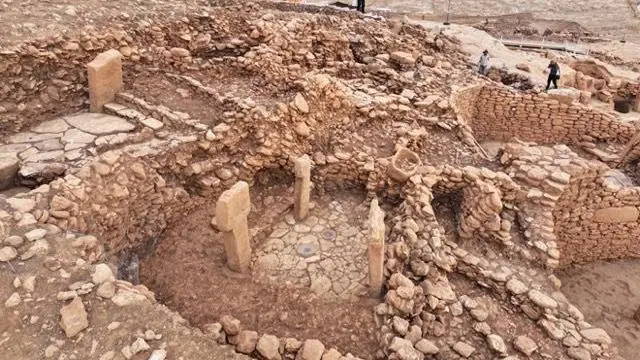
Prof. Dr. Karul says that the depiction of the human face they found matches their previous interpretations of human transformation:
"In the beginning, mostly animal depictions are seen. A few centuries after the transition to settled life, human sculptures appear. First, figures combined with animals, then independent human sculptures are made."
According to Prof. Dr. Karul, this shows that humans have begun to place themselves at the center of the universe.
The excavation director stated that the human-faced obelisk in Karahantepe is also a part of this process, saying, "In general, it is an indicator of the cognitive transformation that humans have undergone, that is, the change in their relationship with their environment."
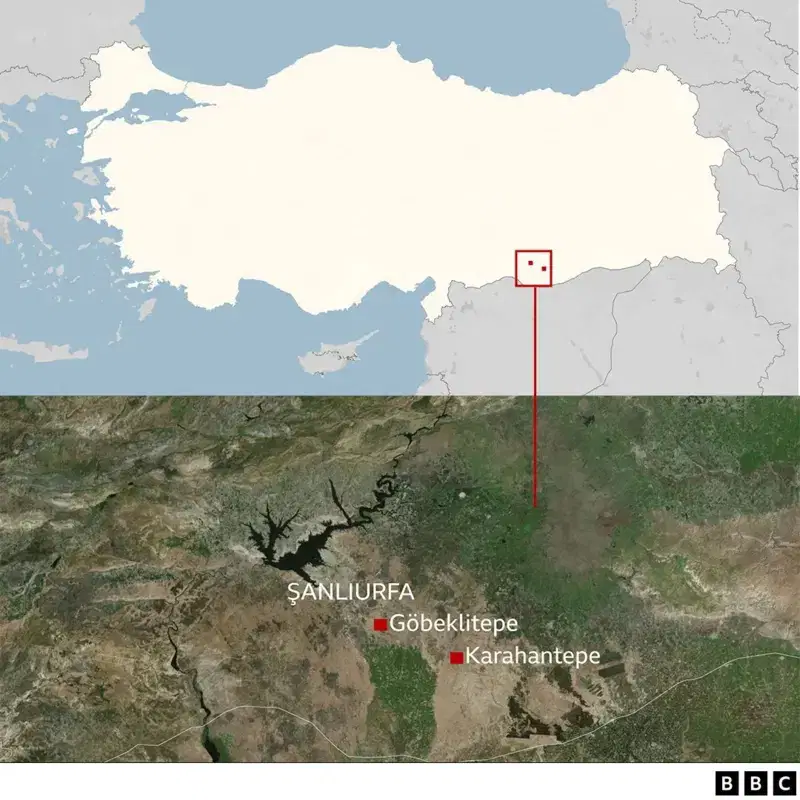
Dr. Ceren Kabukçu draws attention to the emotional element in this depiction:
"They don't just draw a person exactly; they add an expression to it. A world of emotion, a meaning is added, and the fact that this meaning is added shows that there is a more complex worldview there."
'WE KNOW THIS FACE'So is this the oldest facial depiction found in the world?
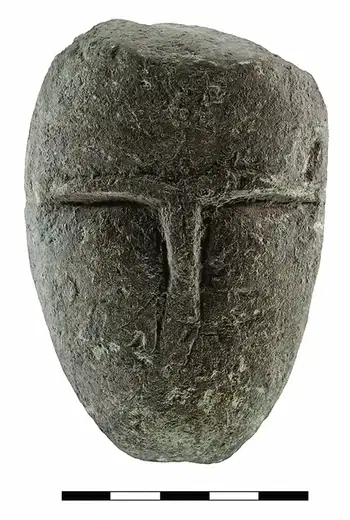
Speaking to BBC News Turkish, archaeologist İsmail Gezgin points out that similar discoveries have been made in the past in the Levant region, which encompasses today's Lebanon, Palestine and Israel.
A 12,000-year-old human depiction was also found in studies conducted at the Nahal Ein Gev II excavation site in Israel by experts from Cambridge University in England.
Prof. Natalie Munro, an expert from the University of Connecticut in the USA, was one of the names involved in this study conducted in 2017.
Speaking to BBC News Turkish, Prof. Munro said that the press release about the discovery in Karahantepe immediately caught their attention.
"When we saw the face in the photograph, we said, 'We recognize this face.' Because it was a very familiar form. It's particularly striking that it was rendered with a minimal artistic approach. The brow arch and nose are very prominent, and the face is created with just a few lines.
"Depth is given by the carving technique. The human face carved into limestone in our Nahal Ein Gev II and this new Karahantepe obelisk are very similar in this respect.
"I experienced again the same excitement we felt when we made our own discovery ten years ago. It was truly fascinating to see such a similar face in two places so far apart."
'ŞANLIURFA IS ONE OF THE PLACES THAT REFLECTS THIS PERIOD MOST MONUMENTALLY'Prof. Karul points out that in the early stages of settled life, rapid change occurred throughout almost the entire Middle East at roughly the same time.
However, he says Şanlıurfa is "one of the places that reflects this period in the most monumental way."
He says that the settlements here host symbols that represent humans in the most intimate way.
Prof. Karul notes that during the same period, the peoples of the Levant and Anatolia were aware of each other, yet he also states that each region experienced its own unique cultural development.
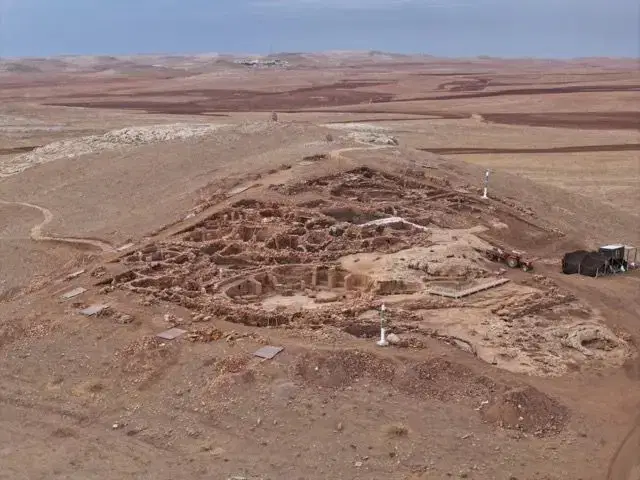 Professor Munro believes the discovery at Karahantepe could transform our understanding of early artistic and symbolic behavior. He says the find demonstrates not only artistic traditions but also how knowledge and symbols spread across societies.
Professor Munro believes the discovery at Karahantepe could transform our understanding of early artistic and symbolic behavior. He says the find demonstrates not only artistic traditions but also how knowledge and symbols spread across societies.
Prof. Munro also agrees.
Recalling that they had previously discussed the movement of this type of art from the Levant region northward towards Anatolia in their published study, he says, "It wasn't as far north as Göbeklitepe, but it was clear that there was a progression in that direction. This new example from Karahantepe shows that that chain continues."
WHAT IS KNOWN ABOUT THE EXCAVATIONS AT KARAHANTEPE?Türkiye first heard of prehistoric settlements in the Şanlıurfa region with Göbeklitepe.
Göbeklitepe is considered the oldest known temple in the world, with a history of approximately 12 thousand years.
After Göbeklitepe, excavations began in Karahantepe, about an hour away, in 2019.
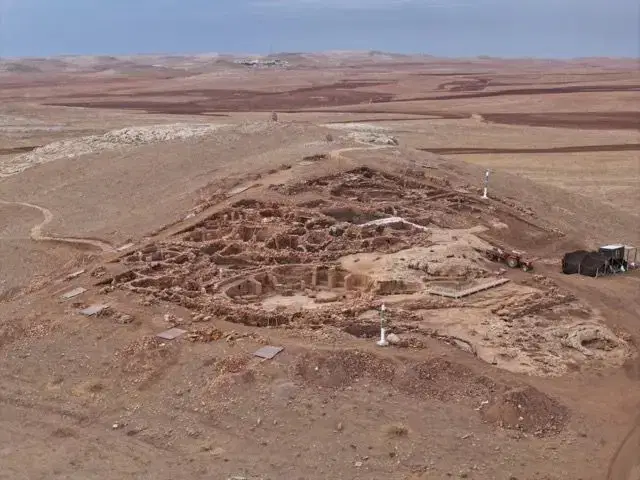
The excavation site is located on a limestone cliff in the Tek Tek Mountains National Park in Şanlıurfa and covers an area of approximately 14 hectares.
"We know that the settlement here was used for approximately 1,500 years, starting around 9500-9600 BC and continuing until around 8000 BC," says Prof. Karul, the excavation director for both Göbeklitepe and Karahantepe.
According to Karul, this chronology shows that Karahantepe is contemporary with Göbeklitepe.
As a result of excavations carried out in different layers in Karahantepe, both monumental structures and residences were unearthed.
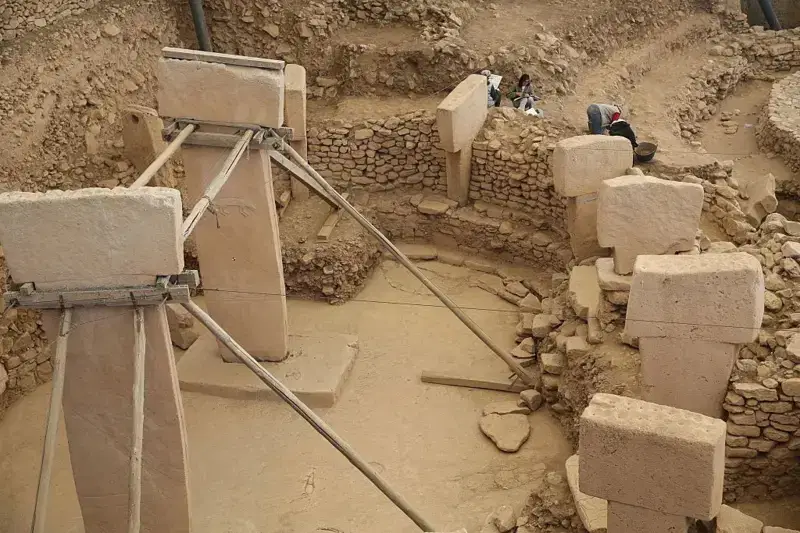
Especially T-shaped pillars were found.
It is stated that the main function of these stones is to carry the roof and that they are used especially in monumental buildings.
'A PROJECT FOR THE COMMON HISTORY OF ALL WORLD SOCIETIES'Professor Karul says, "I can say that Karahantepe no longer surprises us, because we encounter a new surprise every excavation season. I can say that we have become accustomed to this excitement."
Prof. Dr. Karul states that although Göbeklitepe was previously thought to be only a sacred site, the houses discovered also show signs that the region was also a settlement.
Prof. Dr. Karul, who stated that they now prefer to call Karahantepe "public buildings" instead of "temples," continues as follows:
"In the later stages of settlement, we also found finds of cultivated plants and domesticated animals. This sheds light on the transition to both sedentarism and agriculture."
Prof. Dr. Karul believes that the human-faced obelisk could also shed light on other discoveries to be made at the current excavation site.
Prof. Karul, noting that the region is a point of common history for all humanity, said, "This is a project carried out not only for Anatolia, but for the common history of all societies in the world."
Cumhuriyet


